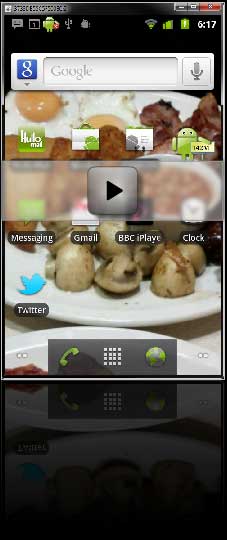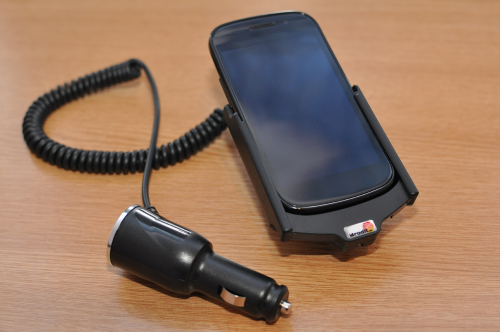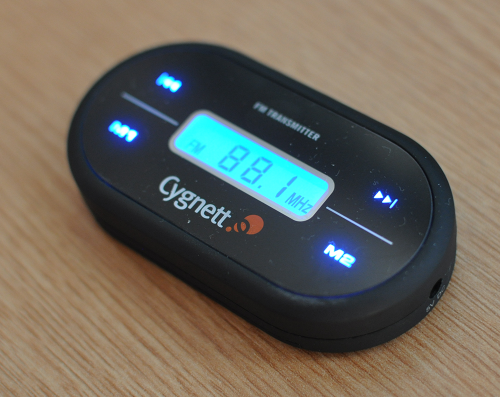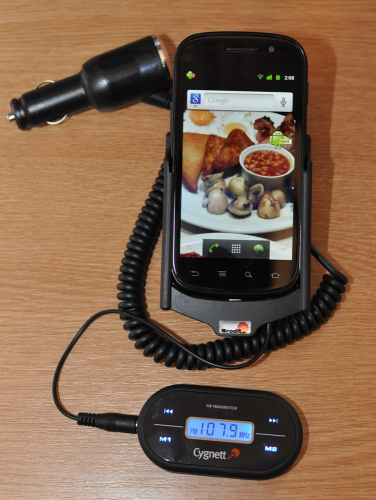DigitalOutbox Episode 85
In this episode the team discuss Microsoft buying Skype, Google IO and Apple winning over Publishers.
Playback
Listen via iTunes
Listen via M4A
Listen via MP3
Shownotes
1:22 – Microsoft buys Skype
– Microsoft buys Skype for $8.5 billion
– Skype will support Microsoft devices like Xbox and Kinect, Windows Phone and a wide array of Windows devices, and Microsoft will connect Skype users with Lync, Outlook, Xbox Live and other communities. Microsoft will continue to invest in and support Skype clients on non-Microsoft platforms.
– Skype will become a new business division within Microsoft, and Skype CEO Tony Bates will assume the title of president of the Microsoft Skype Division, reporting directly to Ballmer.
– Just when I thought Skype’s Mac interface couldn’t get any worse
5:49 – Google IO Day 1 – Android
– Youtube Movies
– http://techcrunch.com/2011/05/09/google-partners-with-sony-pictures-nbc-universal-and-warner-brothers-for-youtube-movies/
– 3000 full length movies available to rent on Youtube from Sony, NBC, Universal and Warner
– Standard industry pricing ($3.99 new release. $2.99 library)
– US Only
– Some good titles
– 1 week to start watching. 24 hour to finish once started.
– No subscription – just transactional.
– Will be on Google TV
– Google TV Update
– http://mashable.com/2011/05/10/google-tv-news/
– Hneycomb will come to platform in a couple of months
– Will have access to app store
– Ice Cream Sandwich
– http://techcrunch.com/2011/05/10/ice-cream-sandwich-to-bring-new-ui-framework-to-android/
– The next major release of Android comes just in time for hot summer days. Ice Cream Sandwich, as it’s called, is well, Google’s “most ambitious” release yet. And look! A new logo!
– Google says they wanted to create an OS that runs everywhere. Enter: Ice Cream Sandwich. Nevermind Honeycomb, – Google says this is the OS that will power tablets, convertible slates, smartphones and more. With it, comes a refreshed UI that leans heavily on a new application framework that Google has yet to detail, besides stating it will solve the issue of coding for different hardware profiles.
– Part of ICS is a new OpenGL facetracking, which Google demo’d on stage at I/O. It even auto-pans based on voice detection, focusing a cropped view on whoever is talking.
– Google and Hardware Manufacturers Promise
– http://lifehacker.com/5800425/google-and-hardware-manufacturers-promise-android-software-upgrades-every-18-months
– Guarantee 18 months of software upgrades for handsets
– Doesn’t guarantee speed…but that your handset should at least support the next 18 months of updates
– Android@Home
– http://mashable.com/2011/05/10/android-at-home/
– Google has just unveiled the Android@Home framework, a set of protocols for controlling light switches, alarm clocks and other home appliances through any Android device.
– The search giant’s ambitious plan intends to turn the home into one connected device. During a demo Tuesday at Google I/O in San Francisco, the company showed off the capability to control lights via an Android tablet. Android@Home essentially makes it possible to control wireless or connected devices.
– Google also showed off a new type of Android device: a home theater system called “Project Tungsten.” Google rigged several speakers to the Android OS and, using an Android tablet, controls the speaker system. Google also demonstrated how the system can start playing music just by swiping a near-field communication-enabled CD case in front of the “Project Tungsten” setup.
– Devices – end of this year
– Google gives away 5000 Galaxy Tab 10.1’s
– http://www.engadget.com/2011/05/10/samsung-galaxy-tab-10-1-launching-in-about-a-month-google-giv/
– Usually distribute some hardware
– This year it’s the brand new Galaxy Tab 10.1
– Limited edition (white babk), Honeycomb 3.0 but will get 3.1 in a couple fo weeks
– Google Music Finally Launched
– http://mashable.com/2011/05/10/google-music
– On Tuesday at Google I/O, the company took the wraps off Google Music Beta. Currently, that site is invite-only, but users will be added to the platform soon. The product is “free for a limited time.”
The service will be available starting on Android devices and via the web.
– It will run on all Android devices, including tablets and mobiles
– You’ll be able to create custom playlists
– You’ll be able to edit track info, get play counts, etc.
– Music will be available when you’re offline, too
– Users can upload and store songs to a cloud-based directory
– Users can wirelessly and automatically sync playlists from the web to connected devices and vice versa
– Google will automatically remove any music if subject to a copyright claim – http://gizmodo.com/5800490/google-will-remove-your-music-from-its-cloud-if-it-infringes-on-copyrights
22:24 – Google IO Day 2 – Chrome
– Chrome Browser
– http://techcrunch.com/2011/05/11/google-announces-160-million-chrome-users-massive-improvements-coming
– From 70 to 160 million users
– Google plans major improvements over the next few months including speech support built into the browser as well as more developer APIs to improve user interaction. Speech systems, for example, will allow you to use Chrome to translate speech in real time. Major HTML5 improvements to come too
– WebGL support – Angry Birds in chrome at 60fps
– Chrome Web Store
– Google’s Sundar Pichai also had some more to share about the Chrome Web Store. In the first three months since launch, they’ve seen 17 million app installs. And developers are telling them that apps installed through the store are seeing users spend roughly two times the amount of time in their apps installed through the store.
– And now it’s about to get bigger. Chrome Web Store is finally going international to all of Chrome’s 160 million users over the web, Pichai announced. This means it is now available in 41 languages around the world.
– Then Chrome’s Vikas Gupta took the stage to announce another big thing: in-app payments. But the bigger news may be that there will be a 5 percent flat fee to use these within Chrome. He laid out the math for everyone: that means developers keep 95 percent — that’s huge.
– Redesigned, better discovery – game on iOS App Store
– ChromeBook
– http://www.google.com/chromebook/#
– http://mashable.com/2011/05/11/google-chrome-notebooks/
– the first Google Chrome OS notebooks will make their worldwide debut June 15.
– Samsung and Acer will be the first companies to launch Chrome OS devices. Samsung’s device will sport a 12.1-inch screen with an 8-hour battery life, while Acer’s device will be a 11.6-inch display and a 6.5-hour battery life. Samsung’s device will retail for $429 for the Wi-Fi version and $499 for the 3G version. Acer’s more portable notebook will start at $349 and up.
– Google SVP of Chrome Sundar Pichai said during Wednesday’s keynote at the Google I/O developer conference in San Francisco that both Chrome OS notebooks will be available starting June 15. It will launch in the U.S. on Amazon.com and in Best Buy stores nationwide, but the United Kingdom, France and other countries will get the chance to buy Chrome OS notebooks at the same time.
– The hardware seems like a dream machine: built-in security, “all day battery”, multiple connectivity methods that keep the hardware always connected. The production version now sports an unnamed Intel dual core CPU and feel much more polished than the CR-48 pilot program. External file storage now works, and unlike on the CR-48, users can plug in a camera and the Chromebook will mount the storage.
– However, as great as the Chromebook seems, it’s launching as what sounds like a post-beta product. The company announced on the stage of I/O that Chromebook updates will roll out every few weeks. Sort of awesome but also sort of scary.
– Gmail, Calendar and Google Docs – full offline support this summer
– Chromebooks for education will cost $20 a month
– Chromebooks for business – $28 a month
– The $28 per user monthly subscription fee will be covering hardware, a web console for multiple users, warranty and replacements, support and hardware auto-updates.
34:12 – Telegraph supports Apple Subscription Model
– The app is free to download but charges readers £1.19 for a single edition, or £9.99 for a monthly subscription. Telegraph newspaper subscribers get full access to its iPad edition for free. The Telegraph’s upgraded iPad app features letters, cartoons, galleries and puzzles – all of which were missing in the first version.
– The Telegraph Media Group title has adhered to Apple’s contentious terms for digital subscriptions, which allow the technology company to keep 30% of all the fees from subscriptions as well as all of the lucrative customer details.
– One downloaded the content can be accessed without a data connection
– Will last for 30 days before being removed
38:08 – Conde Nast support Apple Subscription Model
– Conde Nast is allowing new subscription rates for it’s New Yorker title.
– An updated version of that magazine’s iPad app lets users subscribe to the weekly magazine for $5.99 a month, or the equivalent of a $1.50 an issue. That’s a steep discount from the app’s old model, which only sold individual issues for $4.99 a pop.
– Conde Nast is selling an annual subscription to the iPad app for $59.99; a yearly subscription to the print version of the magazine costs $69.95. Very important: Conde says print subscribers will get iPad access for free.
– Extending to other titles including Wired over coming months
– Publishers maybe getting Apple to back down on terms;
– Apple still controls crucial subscriber information, and only allows Conde Nast to ask for name, zip and email. But the publisher now has two chances to ask for user’s email: The first as a standard opt-in screen, and then again on a screen that asks for email and a password in order to get exclusive content.
– Conde has more flexibility on pricing than Apple originally offered. For instance, at one point, Apple didn’t want the publisher to be able to offer a print+digital bundle at a $10 premium to digital-only, but wanted all prices to be the same (which they will be when GQ offers subscriptions later this month: $19.99 a year for digital-only, or digital + print).
– The agreement extends to international markets, etc.
40:26 – LastPass resets Master Passwords
– Password management system LastPass has reset users’ master passwords as a precaution following the discovery of a possible hack attack against its systems.
– The move follows the detection of two anomalies – one affecting a database server – on LastPass’s network on Tuesday that could be the result of a possible hack attack. LastPass detected that more traffic had been sent from the database than had been received by a server, an event that might be explained by hackers extracting sensitive login credentials, stored in an obfuscated (hashed) format.
– The worst case scenario is that miscreants might have swiped password hashes, a development that leaves users who selected easier-to-guess passphrases at risk of brute-force dictionary attacks. Once uncovered, these login credentials might be used to obtain access to all the login credentials stored through the service, as LastPass explains in a blog post
– The password-management outfit has taken the possible attack and resulting service disruption as the opportunity to introduce a stronger password hashing system. Although LastPass isn’t sure how hackers might have entered its network – if indeed that’s what happened – an assault based on an initial break-in via its Voice over IP system is the company’s best initial guess as to what might have gone wrong.
– This week’s security flap at LastPass.com follows a security breach just six weeks ago that created a means to extract the email addresses – though not the passwords – of enrolled users.
45:31 – Raspberry Pi
– Braben has developed a tiny USB stick PC that has a HDMI port in one end and a USB port on the other. You plug it into a HDMI socket and then connect a keyboard via the USB port giving you a fully functioning machine running a version of Linux. The cost? $25.
The hardware being offered is no slouch either. It uses a 700MHz ARM11 processor coupled with 128MB of RAM and runs OpenGL ES 2.0 allowing for decent graphics performance with 1080p output confirmed. Storage is catered for by an SD card slot. It also looks as though modules can be attached such as the 12MP camera seen in the image above.
We can expect it to run a range of Linux distributions, but it looks like Ubuntu may be the distro it ships with. That means it will handle web browsing, run office applications, and give the user a fully functional computer to play with as soon as it’s plugged in. All that and it can be carried in your pocket or on a key chain.
– Primarily used for education, it will be distributed through the Raspberry Pi foundation starting inn 2012




